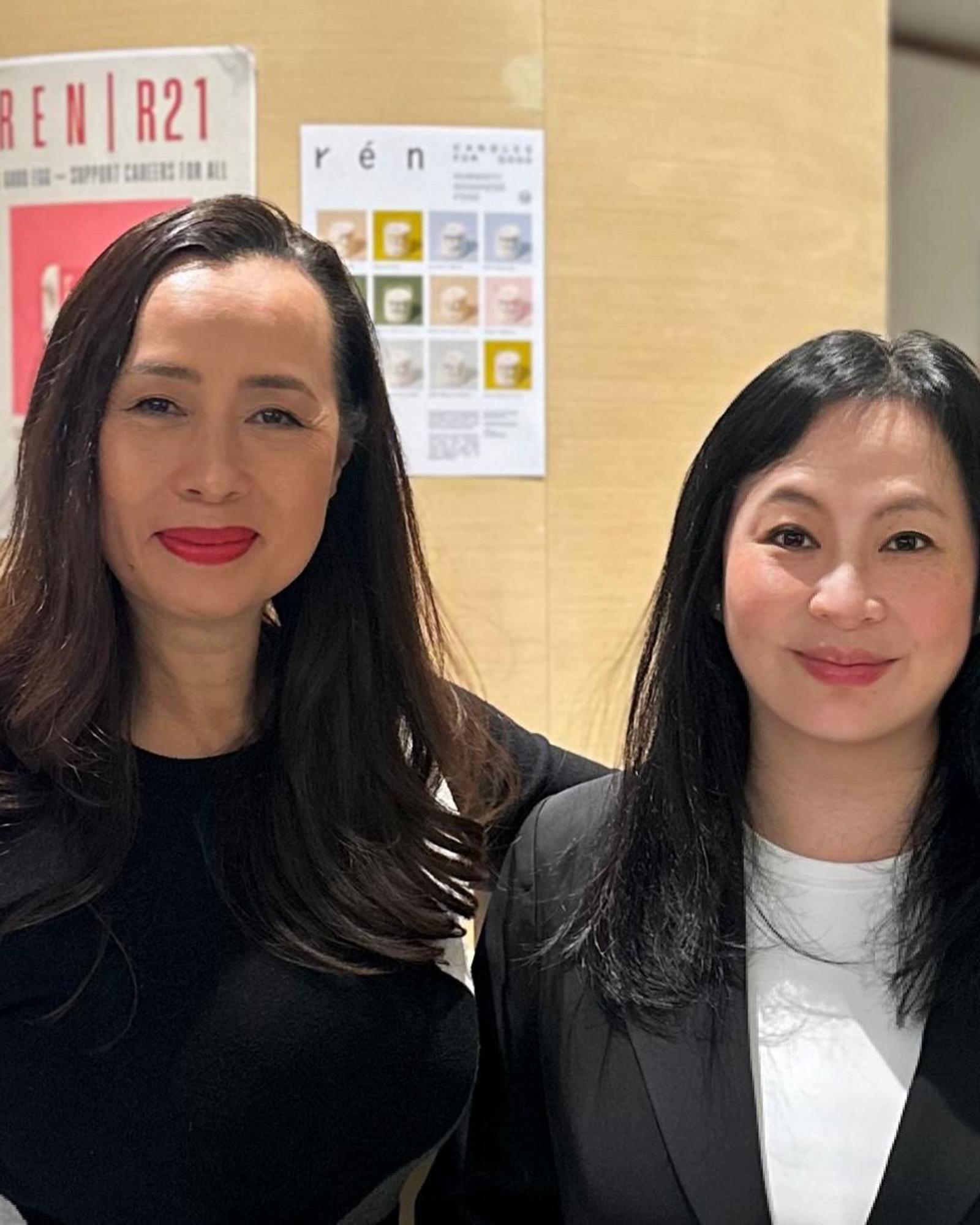r é n and HART Haus’ Collaborative Exhibition “Art Actions | Our Youth Our Future” Is Now Open
Running from now until September 13.
As r é n continues to extend its reach in supporting the youth of Hong Kong across more industries, we’re now proud to announce that our collaborative exhibition with HART Haus – a not-for-profit arts initiative co-founded by Kristine Li – is now open and underway at the latter’s studio space in Kennedy Town. Titled “Art Actions | Our Youth Our Future,” the show launched on June 26 and features six emerging artists from Hong Kong and abroad, including three University of the Arts London graduates Keisuke Azuma, Sin U Lam and Daniel Roibal, as well as three 2024 HART Awardees, Kelly Kwok, Elsa Ngai and Kwok Wah San. Guests interested can visit every Tuesday to Saturday from 11 am to 6:30 pm, on the third floor of HART Haus in Cheung Hing Industrial Building, Kennedy Town.
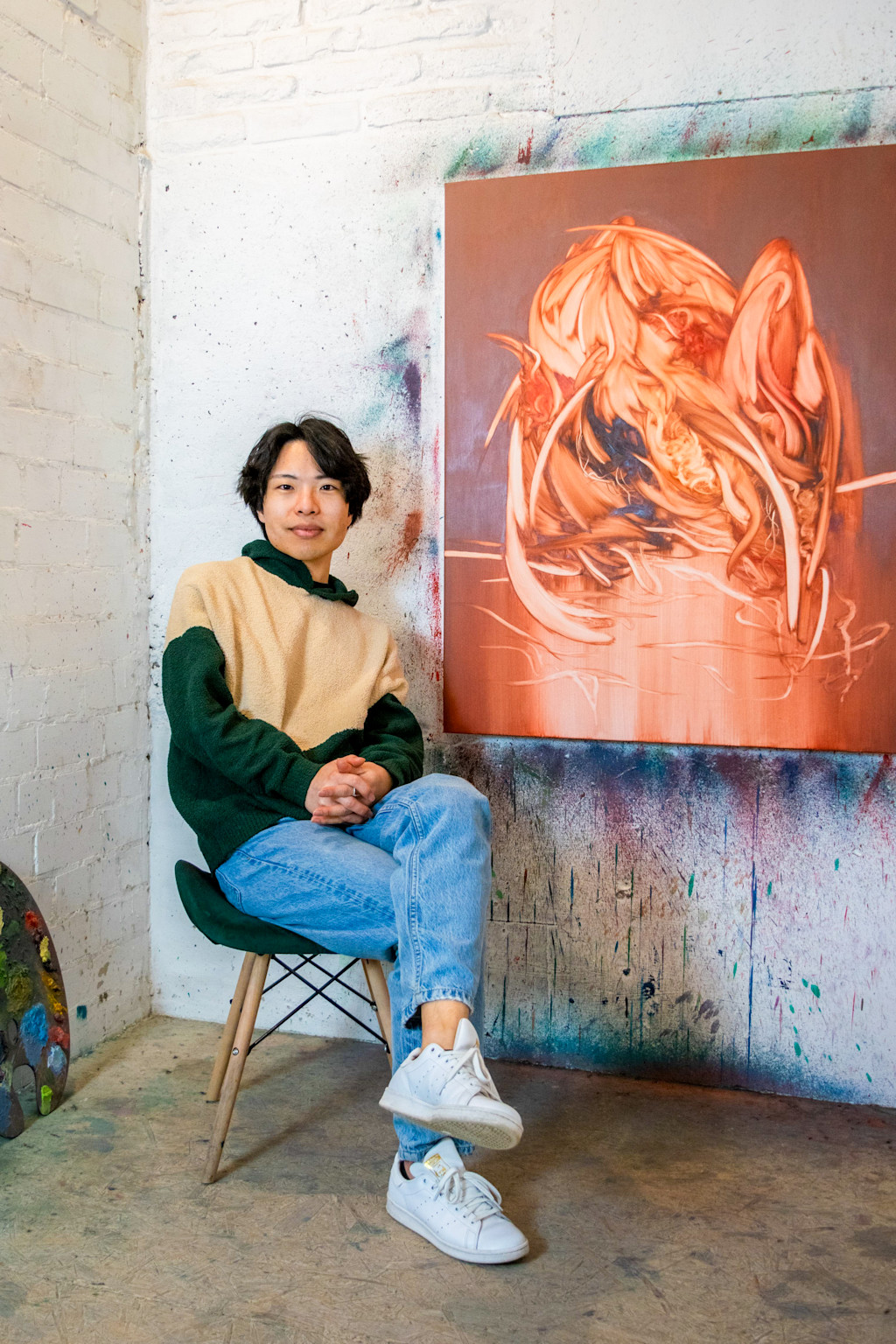
Keisuke Azuma is a Japanese artist based in Vilnius, Lithuania. A graduate of the University of the Arts London, his work has been showcased across a range of respected exhibitions and platforms, including the Royal Academy of Arts, Delphian Gallery, Liliya Gallery, D Contemporary and AucArt. Keisuke’s practice centres on perception and the expression of raw, deeply felt emotion. Through instinctive, gestural brushwork, he crafts paintings that speak directly to the viewer’s emotional core, forging a visceral connection between artwork, body, and mind. His paintings function as reflective spaces – mirrors that invite introspection and encourage a heightened awareness of the self and one’s inner emotional world.
“My inspiration comes naturally from what I perceive,” Keisuke says of his creative process. “Especially when I moved to Lithuania from England, I had a lot of time to face myself. Most of the time, I focus on listening to my inner voice. How my heart and body react to it is one of the main directions of my practice.
“Art is non-border,” he adds. “Everyone gets to see and know what it is in various ways. r é n devotes themselves for such great projects in order to suggest some hidden opportunities to experience art, and this mission is crucial to both the art world and others. I see the current world as quite hectic, which makes it harder for us to find our identity. By fostering creativity, I believe it could help us to hear our inner voices and to find our own identities once again.”
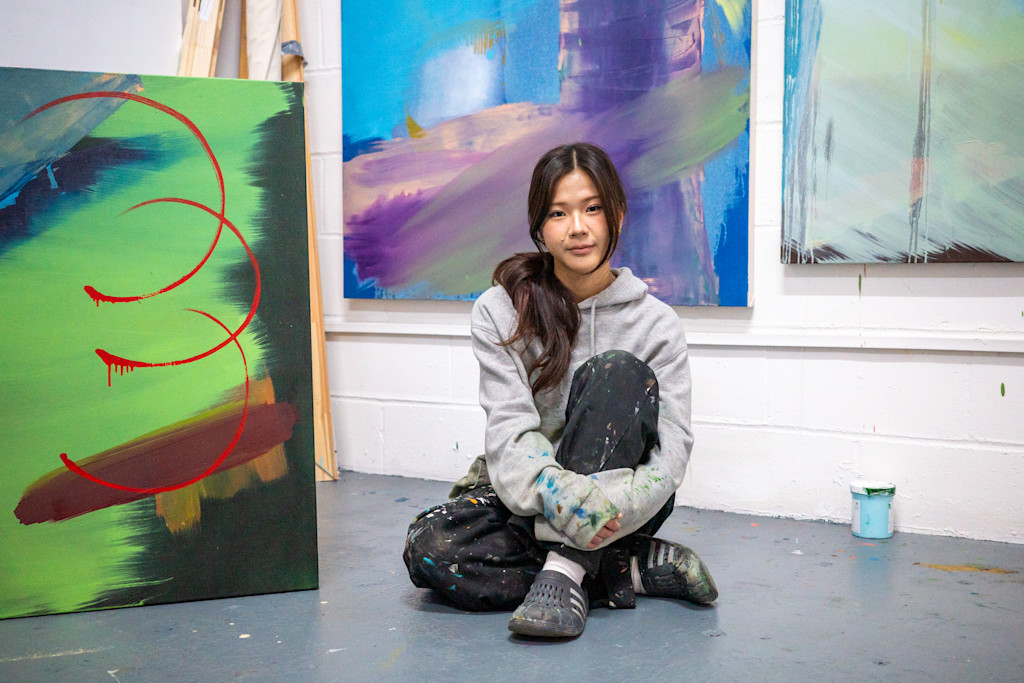
Sin U Lam is a London-based artist originally from Macau and a first-class honours graduate in BA (Hons) Fine Art from Chelsea College of Arts. Her work draws on the rich cultural interplay of East and West that defines Macau, translating its distinctive visual language into a vibrant, abstract style. Exploring the tension between order and improvisation, her practice reflects the city’s ever-shifting identity – a space where tradition and modernity exist in fragile harmony. This sense of impermanence is echoed in her fluid compositions, where forms continuously appear and fade, evoking the transient nature of memory and place.
“It’s been a very new experience for me, because I’m from Macau and I don’t think the art scene there is as vibrant as the one in Hong Kong, or at least I’m not in touch with it yet,” Sin U says of her experience with r é n and HART Haus. “So coming here seeing the studio spaces and meeting so many artists from Hong Kong and people who are just passionate about art has made me feel very reassured and very happy.
“r é n’s efforts in giving more people access to the art world and supporting them is an important one,” she continues, “because there might be a lot of different types of art you can do and still find an audience, but the difficult part is sustaining it and turning it into a career. It takes a lot of work, a lot of effort, and you have to know the right people. You have to make the right connections, and that’s what r é n can do for
these youths.”
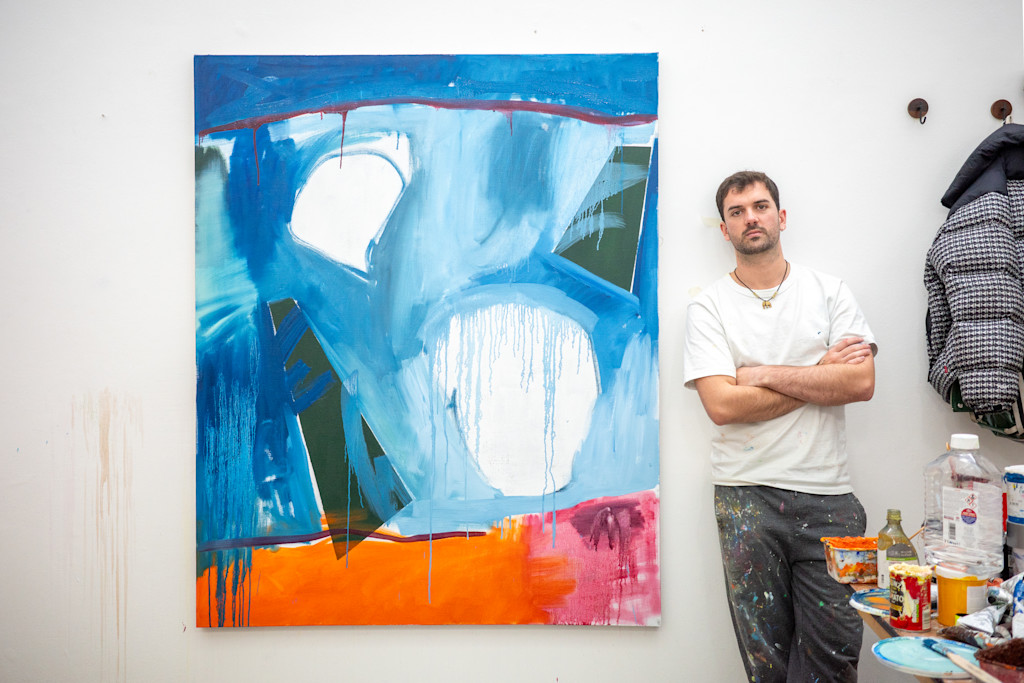
Daniel Roibal, born in Palma de Mallorca, Spain, is a contemporary artist recognized for his abstract paintings that encourage quiet contemplation and introspection. He completed his BA in Fine Arts at Chelsea College of Arts in 2024 and is currently pursuing an MA in Painting at the Royal College of Art in London. Daniel’s practice is strongly shaped by his connection to nature, particularly the Japanese concept of Shinrin Yoku (forest bathing), which emphasises mindful engagement with natural surroundings. This influence permeates his work, which seeks to foster a sense of presence and interconnectedness. His paintings are marked by dynamic compositions and a meditative exploration of the natural world, inviting viewers to pause and fully inhabit the moment.
“The barrier of entry into the art world is high,” Daniel remarks. “Being an artist is expensive, and you often have to live in an expensive city to succeed, so the costs are very high. You might be able to start your career and make some sales, but it’s not just about the beginning – it’s about sustaining it and staying at that level, which is the challenge. Committing to it requires time, money and effort, and it’s very difficult. But luckily, there are people who love art and are willing to help, like r é n and HART Haus. There’s a lot of philanthropy and a great sense of community, which is important, not just in art but in life. Alone, you will get nowhere, so we need
a community.
“Creativity is essential, because it allows us to innovate and improve ourselves and our lives,” he adds. “Without creativity, life will be a straight line, and we’d still probably be living in caves. It helps us evolve and take steps forward, so we must never lose it. Surround yourself with creative people who are open to new ideas and don’t be afraid to share your ideas.”
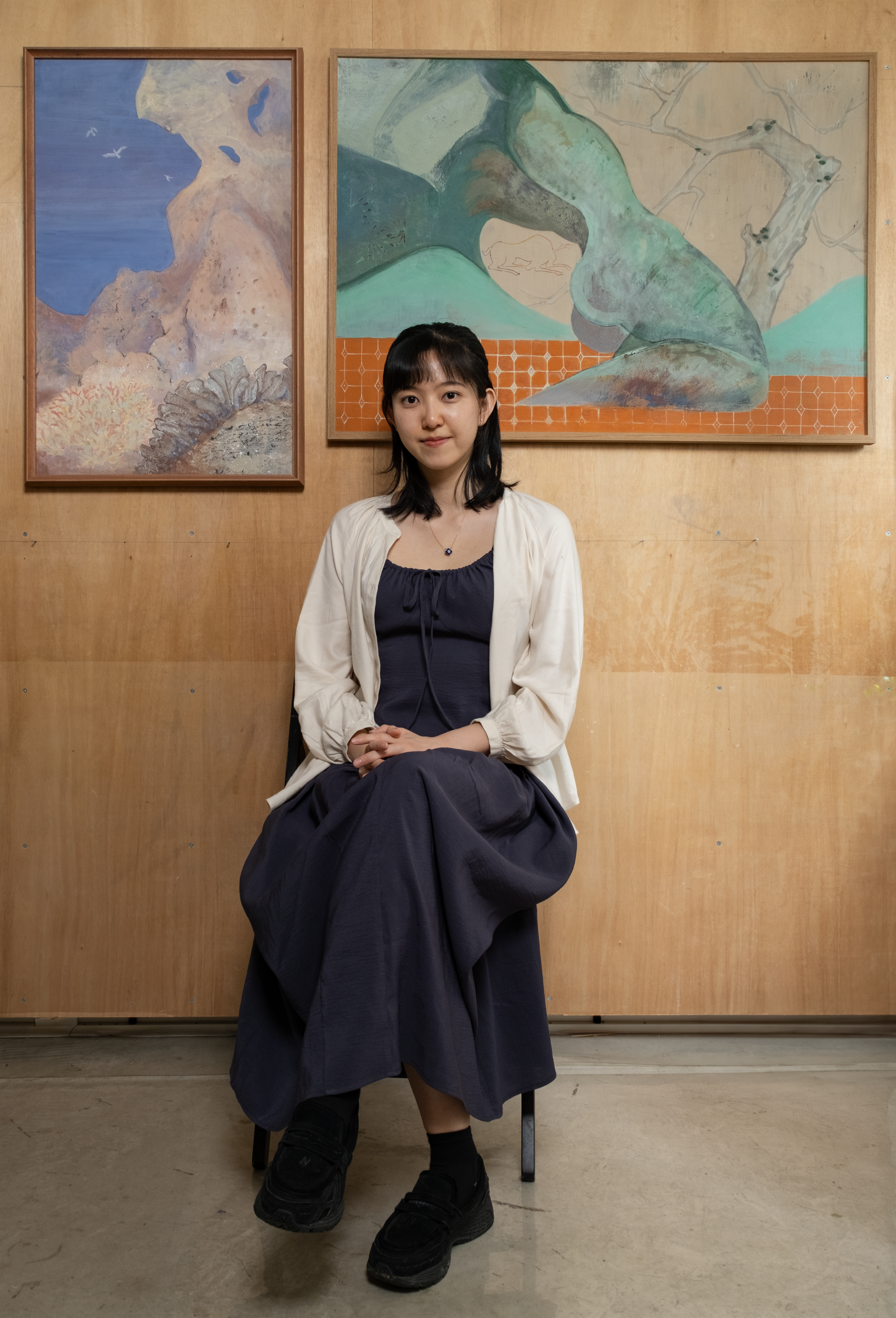
Elsa Ngai graduated with a Bachelor of Arts from The Chinese University of Hong Kong in 2024. She furthered her studies in Chinese painting through advanced programs at Beijing Fine Arts Academy and Tsinghua University. As a recipient of the 2024 HART Award, Ngai is currently concluding a nine-month residency at HART Haus. Her graduation project investigates the delicate boundary between reality and illusion by reinterpreting memory images, revealing an unsettling psychological landscape beneath a serene surface. Elsa’s work frequently involves layering and polishing mineral pigments to create a blurred sense of time, using intuition and preliminary sketches to capture the essence and aura of her subjects. Her artistic achievements include the Friends of the Art Museum Prize, the Madam Jan Yun-bor Memorial Award for Chinese Painting and Calligraphy, and the Professor Raymond Fung Chinese Painting Award.
“For a lot of art graduates like myself, turning it into a career is not an easy thing to do,” Elsa says. “When we first graduated, maybe 90% of my colleagues wanted to become artists, but as the years go by, that percentage continues to fall, and many end up giving up and abandoning their dreams because it’s just too challenging to survive as an artist in Hong Kong. Being able to sustain a career in this field is very difficult, and there’s a lot of pressure, whether it’s from our family or society.
“That’s why what HART Haus and r é n are doing is so important. The barrier to entry to the art world has always been high, and by helping to lower it, they are giving more people the chance to fulfil and realise their dreams of being an artist. Whether it’s financial support or giving us a studio to work in or introducing us to the right
people and making connections, all of these things help keep our dreams alive.”
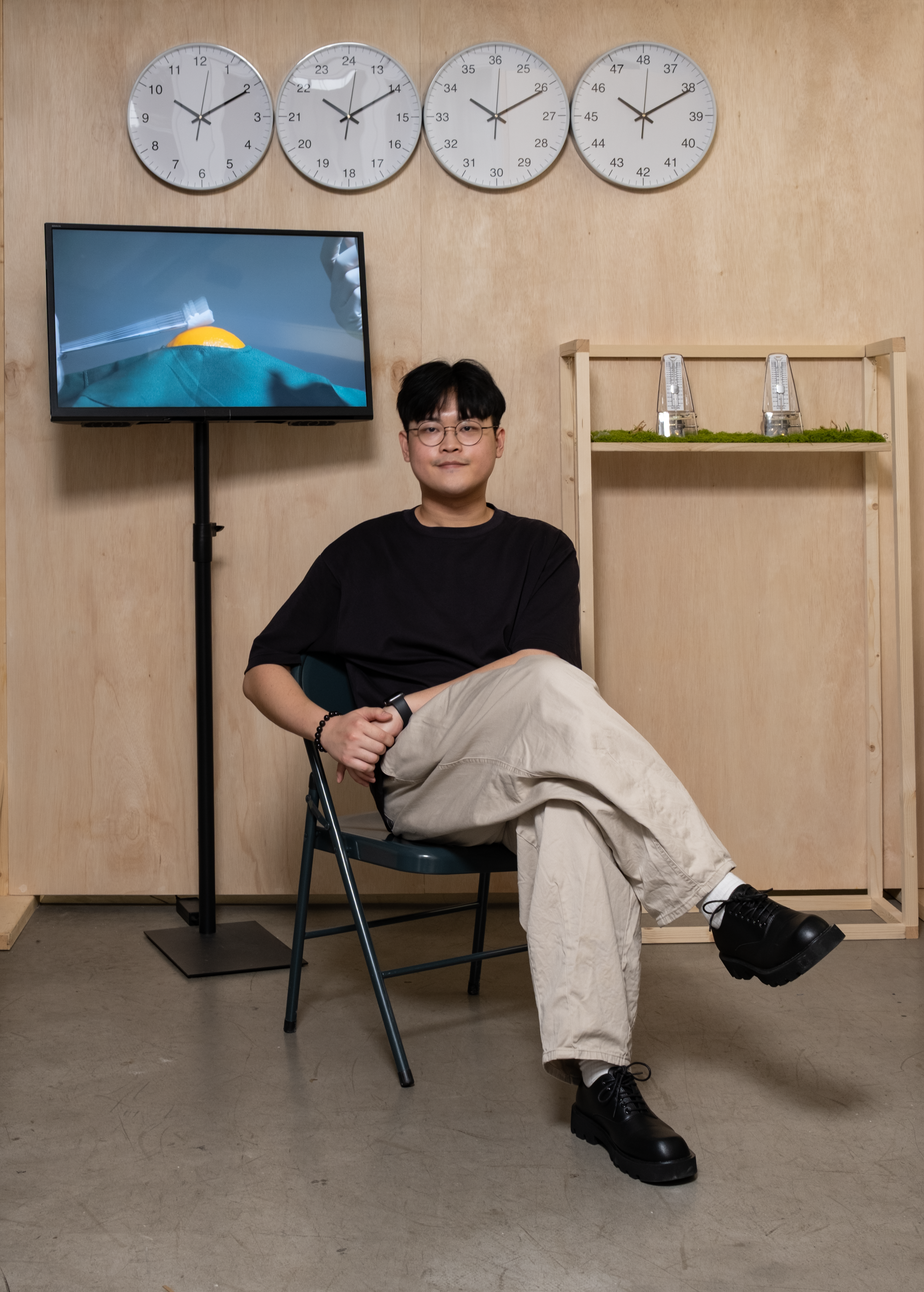
Kwok Wah San graduated from the School of Visual Arts at Hong Kong Baptist University in 2024. As a recipient of the 2024 HART Award, he is currently concluding a nine-month residency at HART Haus. Wah San is a media and installation artist passionate about conveying both fragmented and continuous narratives through photography. His previous works often explore the peculiar phenomena and emotions found within society, using ready-made objects and human actions as tools for intervention. For Wah San, the choice of medium is not a constraint but a source of inspiration and a starting point for conceptual exploration. His creative process is largely driven by observing behavioural patterns within social groups, reflecting on the intriguing relationships between everyday objects and human conduct.
“A lot of my inspiration comes from my observation of things, how they work, how they’re designed and the meanings behind them,” Wah San says. “I’ll come up with ways to experiment with these objects and find new ways of using them or perceiving them, and it can really be anything, from a metronome to an orange. What happens when we see or use these objects differently from their intended usage? What happens when we take these things and place them in a completely different context?
“This exhibition with r é n and HART Haus has been a great experience, and both organisations have been very supportive of us,” he adds about the show. “We have a lot of support to pursue what we want to do and express ourselves with complete freedom, and we’ve also had the chance to meet a lot of new people and expand our network, which in turn gives us now opportunities and sources of inspiration.
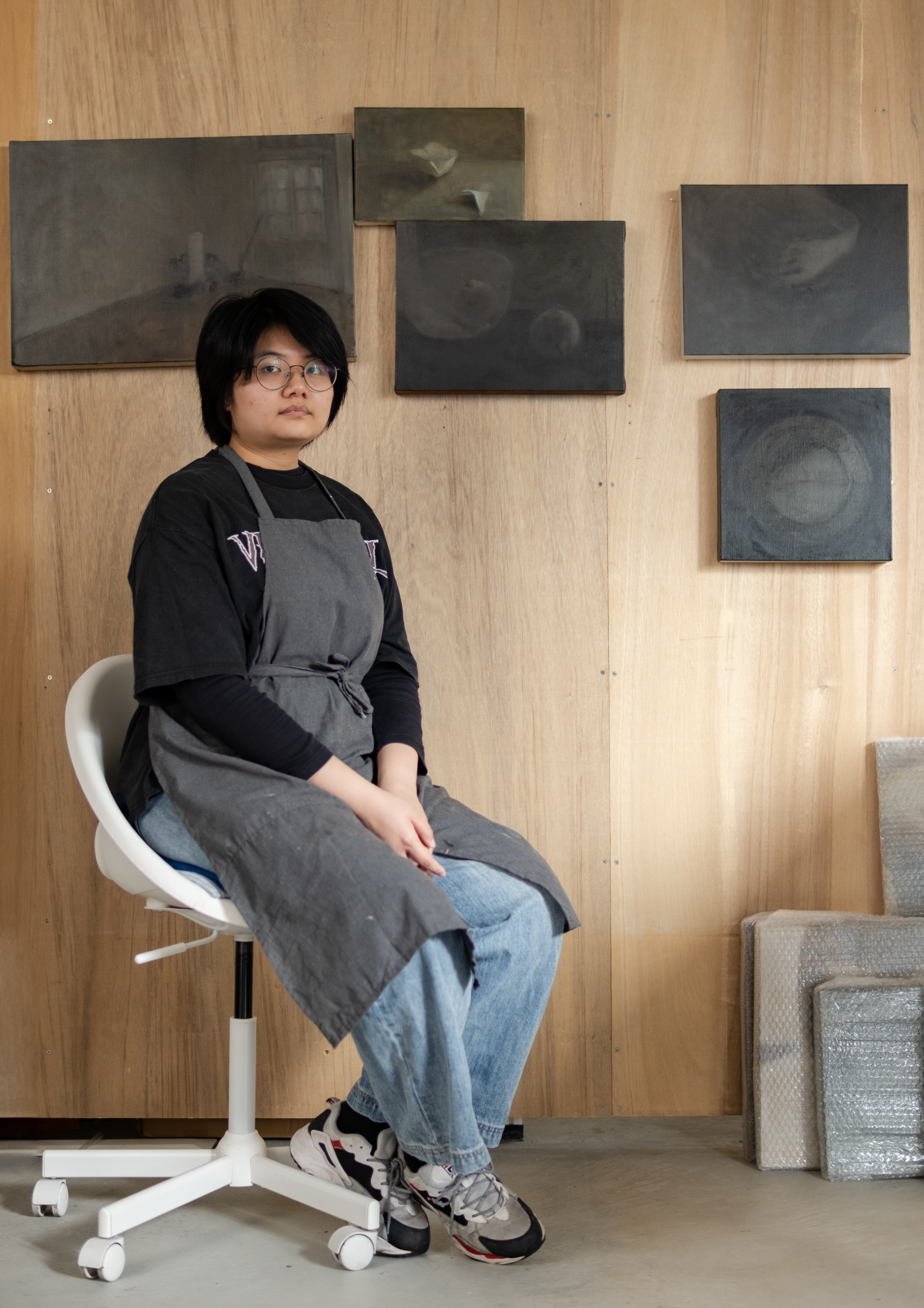
Kelly Kwok is a painter who graduated from the School of Visual Arts at Hong Kong Baptist University in 2024. A recipient of the HART Award that same year, she is currently completing a nine-month residency at HART Haus. Rooted in her immediate environment, Kelly’s practice draws inspiration from everyday objects, surroundings, and the people in her life. She captures subtle, often overlooked moments through photography, using these images as references for her still life oil paintings. Drawn to the quietude of still life, Kelly uses it as a meditative space to express emotion without overt narrative. Through the careful application of multiple thin layers of oil paint, she introduces a sense of ambiguity and softness, evoking feelings of uncertainty and introspection.
“On a day-to-day basis, a lot of my inspiration comes from the conversations I listen to,” Kelly explains. “I listen to a lot of podcasts now, many of which discuss social phenomena and different philosophies. It makes me think about my own life, my own experiences and how I see the world, and all those things inform my work.
“Creativity is more important than we think,” she adds. “Creativity is the combination of imagination with action. It allows new ideas to flourish, innovation to happen, andfor progress to happen. To improve as a society, creativity is crucial.
